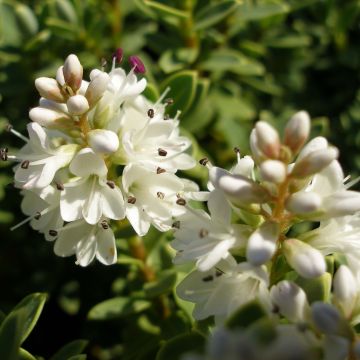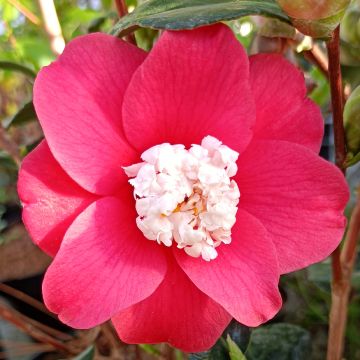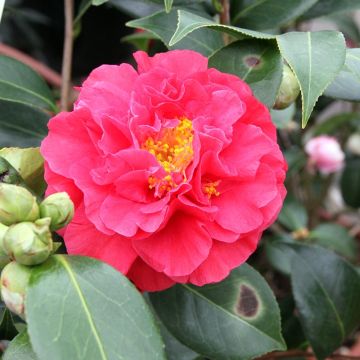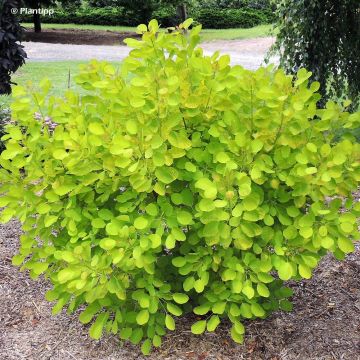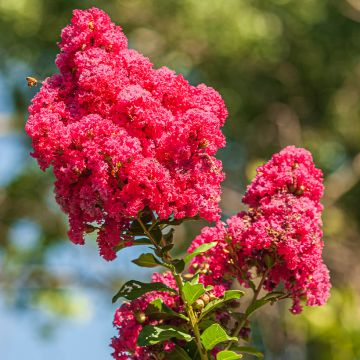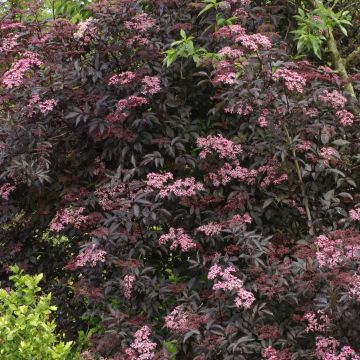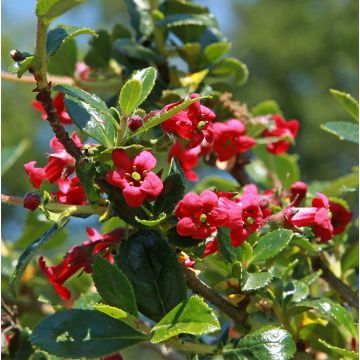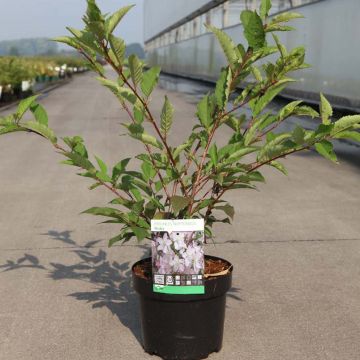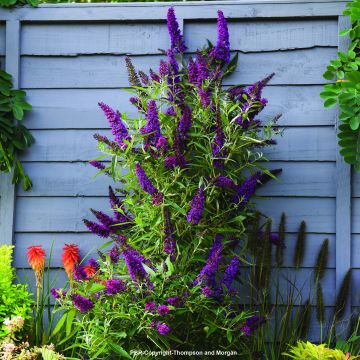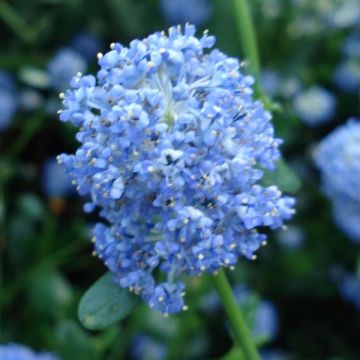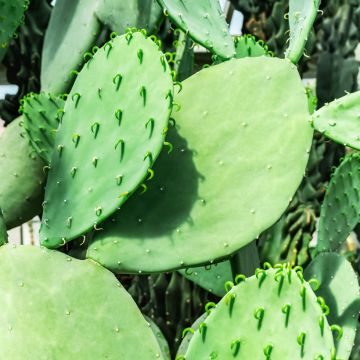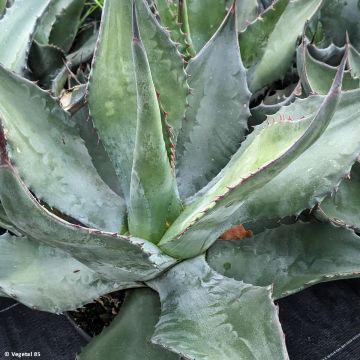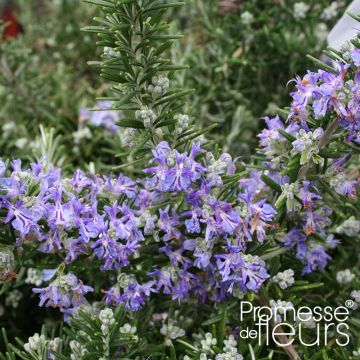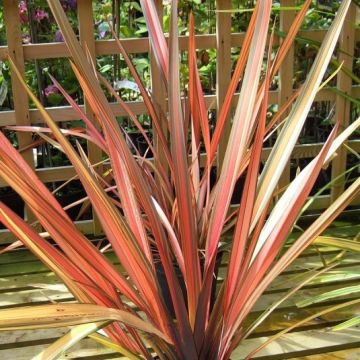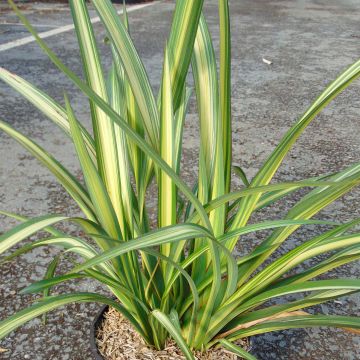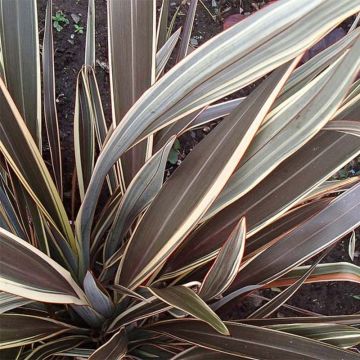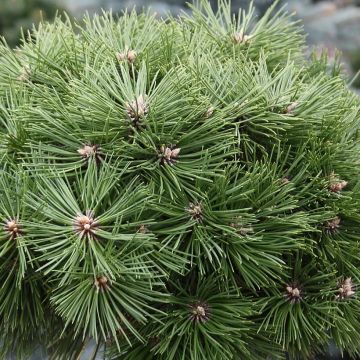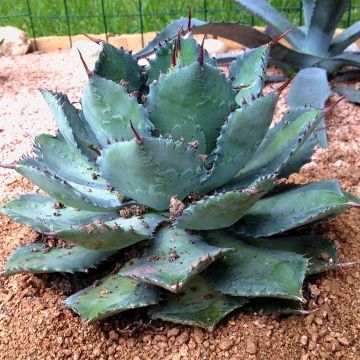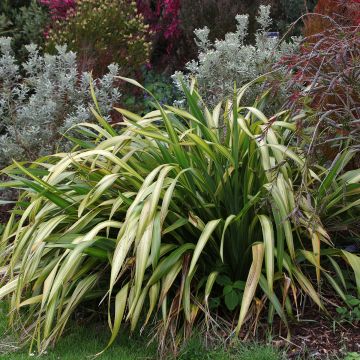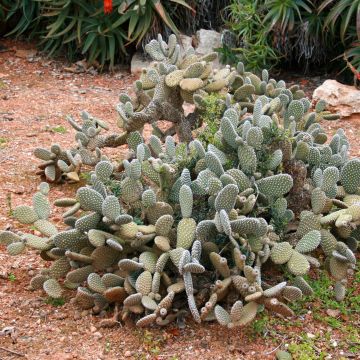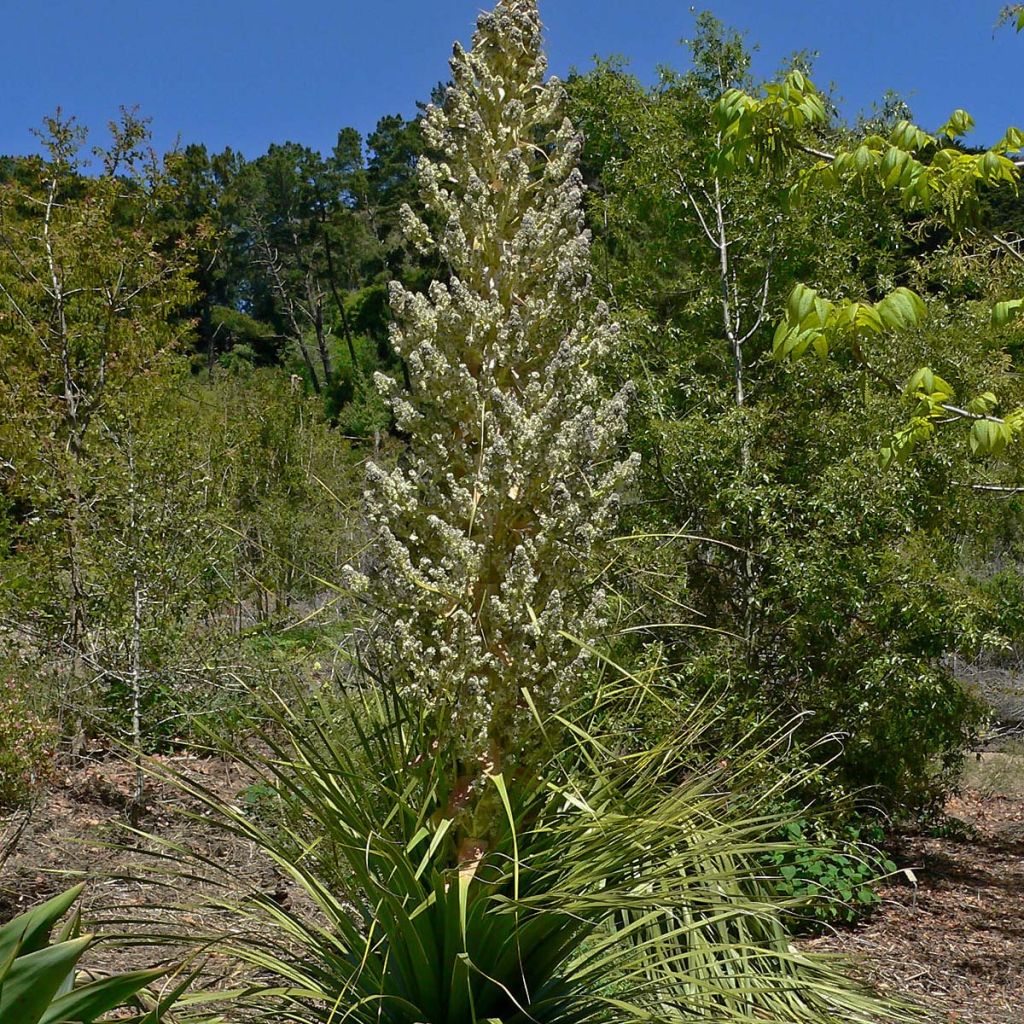

Nolina hibernica La Siberica
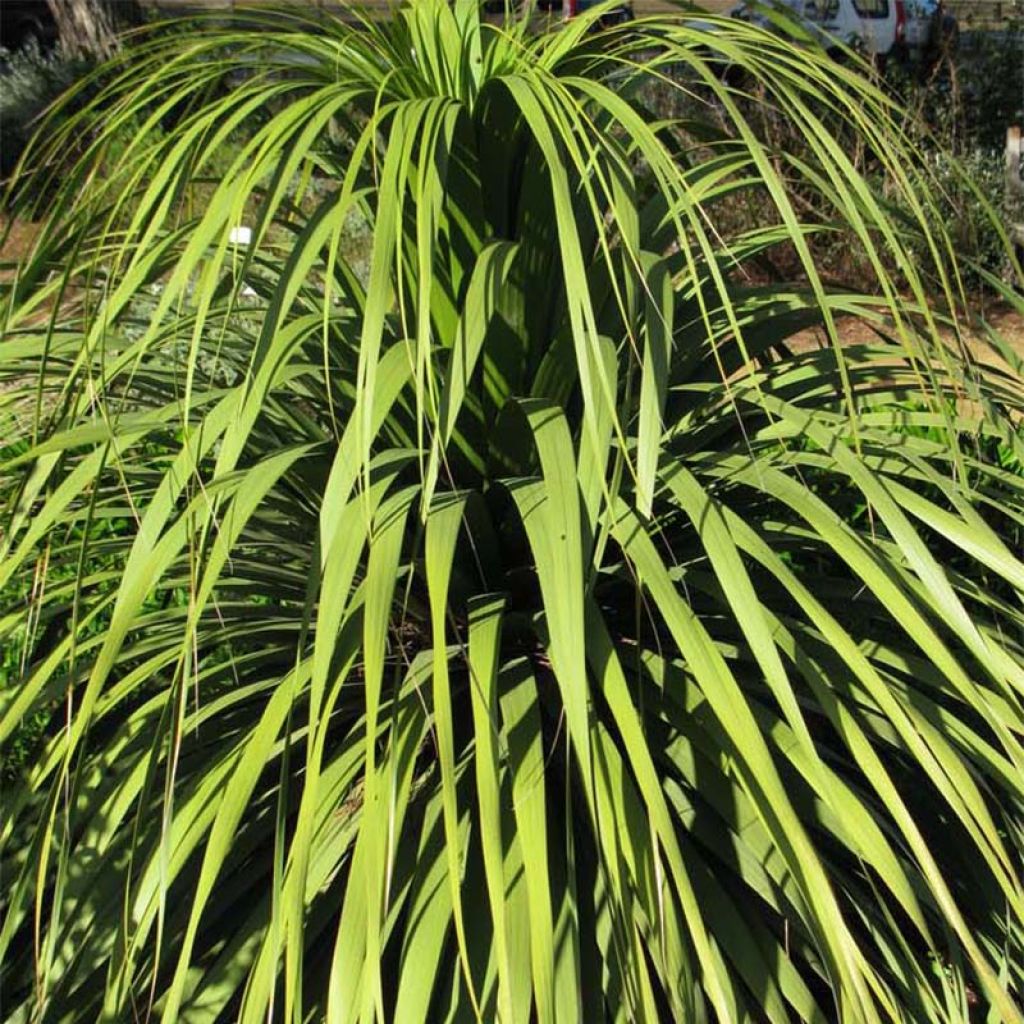

Nolina hibernica La Siberica
Nolina hibernica La Siberica
Nolina hibernica La Sibirica
Beargrass Tree
Hello, Beautiful plant, however, either it stayed in the dark for a long time or the plant was "tied up" but the entire core is white due to a lack of chlorophyll. What a shame.
PATRICK, 21/09/2024
This item cannot be shipped to the selected country
Delivery charge from €5.90
More information
Schedule delivery date,
and select date in basket
This plant carries a 24 months recovery warranty
More information
We guarantee the quality of our plants for a full growing cycle, and will replace at our expense any plant that fails to recover under normal climatic and planting conditions.
From €5.90 for pickup delivery and €6.90 for home delivery
Express home delivery from €8.90.

Does this plant fit my garden?
Set up your Plantfit profile →
Description
Nolina hibernica, also known as Nolina siberica, is a plant still rare in cultivation, discovered only about twenty years ago in the high mountains of Mexico. It resembles an arborescent yucca or a cordyline, perched on a tall, sturdy trunk topped by a dense fountain composed of long ribbon-like leaves. It is one of the hardiest Nolina species, able to withstand short frosts of around -15°C (5°F), if planted in gravelly or rocky soil. It is undoubtedly the best Nolina adapted to temperate climates of Western and Southern Europe, and unquestionably a masterful piece for a large exotic rockery.
Nolina hibernica is a plant from the Asparagaceae family, native to misty pine and oak forests occupying the dry slopes of the Eastern Sierra Madre, a mountain range located in northeastern Mexico. This plant grows up to 3200m (10499ft) altitude, not far from Agave americana, in a cold and humid environment in winter, sometimes snowy, experiencing freezing nights in winter and very hot and dry summers. It is an arborescent botanical species, with fairly rapid growth, initially forming a single, particularly solid trunk, topped by a spherical crown composed of numerous long linear leaves. An adult plant may show a divided trunk. It will reach about 3 to 4m (10 to 13ft) in height and form a crown of 1.5m (5ft) in diameter under our climates. The leaves develop at the end of the trunk. As the plant grows, the trunk appears covered with a thick parchment-like "skirt" made up of the remains of old dried leaves. The shiny, flexible, light green leaves are slightly spiralled. The flowering, in spring or summer, takes the form of a monumental panicle, 1 to 2m (3 to 7ft) in height, feathery in appearance, composed of thin small white flowers not exceeding 2mm (1in).
Nolina hibernica seems even easier to cultivate when planted in rocky soil, or soil composed of a good amount of gravel that allows for perfect drainage. Naturally, it will find its place in a large rockery, on a difficult slope, in full sun or even partial shade. This plant is ideal for brilliantly structuring the centre of an exotic bed. In warm climates, it can be planted alone or on an arid slope with Puya caerulea, Agave americana, Cylindropuntia imbricata, Joshua tree (Yucca brevifolia), giant fennel, fairly hardy candle cacti (Cleistocactus strausii), and equally undemanding viper's bugloss from the Canary Islands. It can also be planted in a very large pot on a terrace, right next to Trachycarpus wagnerianus or Tetrapanax, carefully choosing a sheltered spot in full sun.
Report an error about the product description
Nolina hibernica La Siberica in pictures
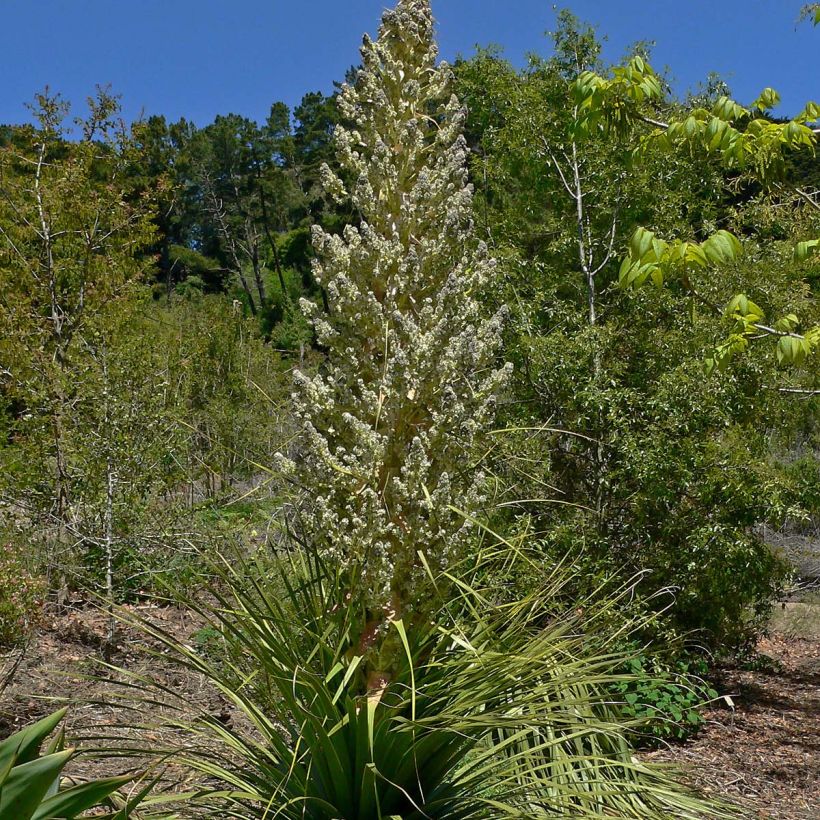

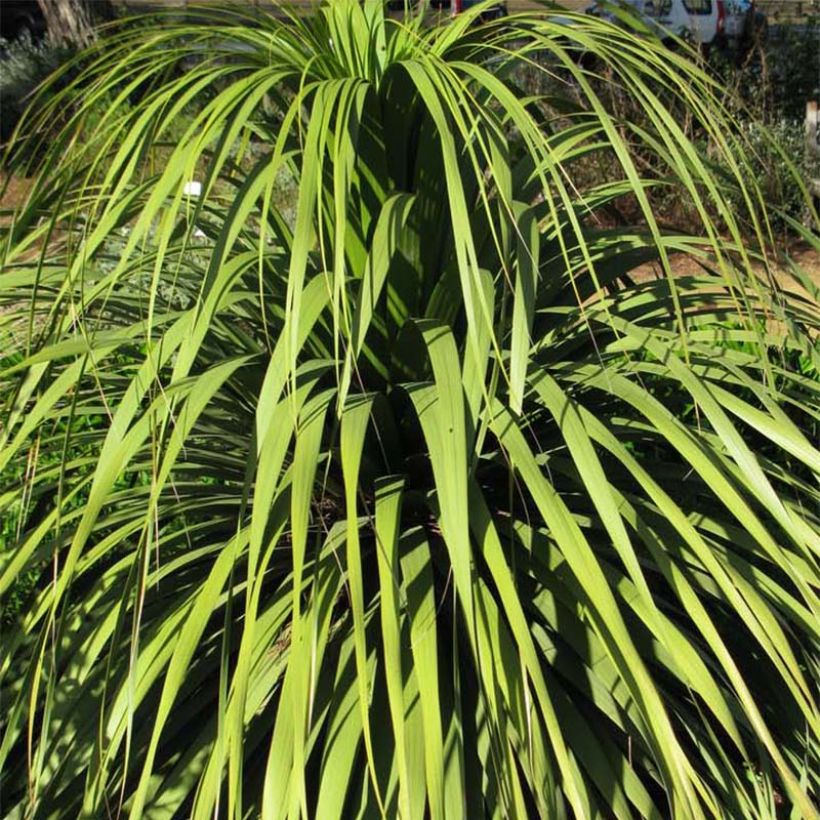

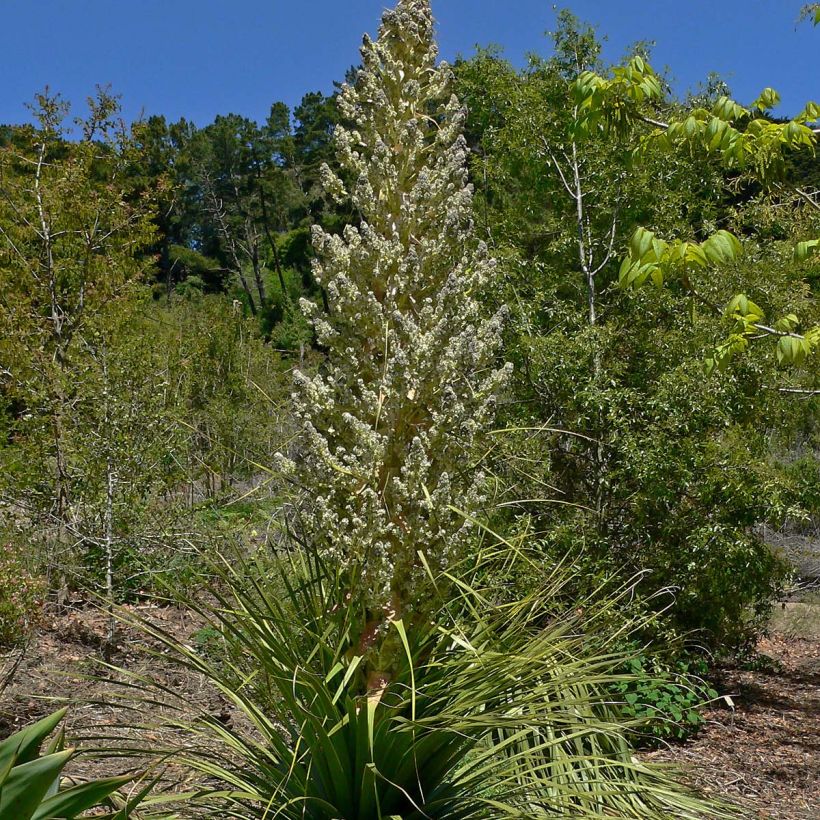

Plant habit
Flowering
Foliage
Botanical data
Nolina
hibernica
La Sibirica
Agavaceae
Beargrass Tree
North America
Other Shrubs A to Z
Planting and care
Plant in full sun or partial shade in warm climates, in preferably poor, rocky, stony, sandy, but well-drained soil. However, it is afraid of winter humidity and cold, which can cause root rot, and tolerates perfectly dry soils in summer. It is indifferent to soil pH, which can be slightly acidic, neutral or slightly alkaline. It will withstand occasional frost, to approximately -15°C (5°F), once well established. However, we recommend protecting young plants from severe frost for the first 2 or 3 years. Once well established, this plant does not require any watering in summer, even in a hot climate. As the plant reaches a large size, it should be grown in very large pots, preferably terracotta or wooden containers. It should be stored indoors or in a cold greenhouse during winter, protected from severe frost in colder regions.
Planting period
Intended location
Care
-
, onOrder confirmed
Reply from on Promesse de fleurs
Evergreen shrubs
Haven't found what you were looking for?
Hardiness is the lowest winter temperature a plant can endure without suffering serious damage or even dying. However, hardiness is affected by location (a sheltered area, such as a patio), protection (winter cover) and soil type (hardiness is improved by well-drained soil).

Photo Sharing Terms & Conditions
In order to encourage gardeners to interact and share their experiences, Promesse de fleurs offers various media enabling content to be uploaded onto its Site - in particular via the ‘Photo sharing’ module.
The User agrees to refrain from:
- Posting any content that is illegal, prejudicial, insulting, racist, inciteful to hatred, revisionist, contrary to public decency, that infringes on privacy or on the privacy rights of third parties, in particular the publicity rights of persons and goods, intellectual property rights, or the right to privacy.
- Submitting content on behalf of a third party;
- Impersonate the identity of a third party and/or publish any personal information about a third party;
In general, the User undertakes to refrain from any unethical behaviour.
All Content (in particular text, comments, files, images, photos, videos, creative works, etc.), which may be subject to property or intellectual property rights, image or other private rights, shall remain the property of the User, subject to the limited rights granted by the terms of the licence granted by Promesse de fleurs as stated below. Users are at liberty to publish or not to publish such Content on the Site, notably via the ‘Photo Sharing’ facility, and accept that this Content shall be made public and freely accessible, notably on the Internet.
Users further acknowledge, undertake to have ,and guarantee that they hold all necessary rights and permissions to publish such material on the Site, in particular with regard to the legislation in force pertaining to any privacy, property, intellectual property, image, or contractual rights, or rights of any other nature. By publishing such Content on the Site, Users acknowledge accepting full liability as publishers of the Content within the meaning of the law, and grant Promesse de fleurs, free of charge, an inclusive, worldwide licence for the said Content for the entire duration of its publication, including all reproduction, representation, up/downloading, displaying, performing, transmission, and storage rights.
Users also grant permission for their name to be linked to the Content and accept that this link may not always be made available.
By engaging in posting material, Users consent to their Content becoming automatically accessible on the Internet, in particular on other sites and/or blogs and/or web pages of the Promesse de fleurs site, including in particular social pages and the Promesse de fleurs catalogue.
Users may secure the removal of entrusted content free of charge by issuing a simple request via our contact form.
The flowering period indicated on our website applies to countries and regions located in USDA zone 8 (France, the United Kingdom, Ireland, the Netherlands, etc.)
It will vary according to where you live:
- In zones 9 to 10 (Italy, Spain, Greece, etc.), flowering will occur about 2 to 4 weeks earlier.
- In zones 6 to 7 (Germany, Poland, Slovenia, and lower mountainous regions), flowering will be delayed by 2 to 3 weeks.
- In zone 5 (Central Europe, Scandinavia), blooming will be delayed by 3 to 5 weeks.
In temperate climates, pruning of spring-flowering shrubs (forsythia, spireas, etc.) should be done just after flowering.
Pruning of summer-flowering shrubs (Indian Lilac, Perovskia, etc.) can be done in winter or spring.
In cold regions as well as with frost-sensitive plants, avoid pruning too early when severe frosts may still occur.
The planting period indicated on our website applies to countries and regions located in USDA zone 8 (France, United Kingdom, Ireland, Netherlands).
It will vary according to where you live:
- In Mediterranean zones (Marseille, Madrid, Milan, etc.), autumn and winter are the best planting periods.
- In continental zones (Strasbourg, Munich, Vienna, etc.), delay planting by 2 to 3 weeks in spring and bring it forward by 2 to 4 weeks in autumn.
- In mountainous regions (the Alps, Pyrenees, Carpathians, etc.), it is best to plant in late spring (May-June) or late summer (August-September).
The harvesting period indicated on our website applies to countries and regions in USDA zone 8 (France, England, Ireland, the Netherlands).
In colder areas (Scandinavia, Poland, Austria...) fruit and vegetable harvests are likely to be delayed by 3-4 weeks.
In warmer areas (Italy, Spain, Greece, etc.), harvesting will probably take place earlier, depending on weather conditions.
The sowing periods indicated on our website apply to countries and regions within USDA Zone 8 (France, UK, Ireland, Netherlands).
In colder areas (Scandinavia, Poland, Austria...), delay any outdoor sowing by 3-4 weeks, or sow under glass.
In warmer climes (Italy, Spain, Greece, etc.), bring outdoor sowing forward by a few weeks.

































